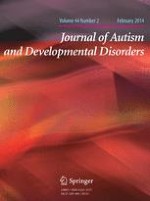01-02-2014 | Original Paper
Comparison Among Children with Children with Autism Spectrum Disorder, Nonverbal Learning Disorder and Typically Developing Children on Measures of Executive Functioning
Gepubliceerd in: Journal of Autism and Developmental Disorders | Uitgave 2/2014
Log in om toegang te krijgenAbstract
It has been suggested that children with nonverbal learning disabilities (NLD) or Asperger’s Syndrome (AS) may show difficulties with executive functioning. There were 3 groups in this study who completed a neuropsychological battery of visual-spatial, executive functioning, and reasoning tasks; AS (n = 37), NLD (n = 31), and controls (n = 40). Results indicated that children in both clinical groups scored within average limits on measures of spatial reasoning and verbal ability. Fluid reasoning was also found to be within average ranges for all groups. The AS group experienced significant problems with cognitive flexibility compared to the other two groups. In contrast the NLD group showed fewer difficulties with cognitive flexibility but more problems with visual sequencing. These findings suggest that performance on executive function measures for children with AS or NLD is remarkably similar with subtle differences present.
